Planning your first solo trip to South America might feel a bit scary at first — but it’s also one of the most exciting and rewarding things you can do. Whether you’re dreaming of hiking through the Andes, exploring colorful cities, or sailing down the Amazon, South America is packed with unforgettable adventures for solo travelers.
Yes, going alone can seem overwhelming — new places, different languages, safety concerns — but don’t worry. With a little preparation and the right mindset, your solo journey can be safe, smooth, and full of life-changing moments. 🌎✨
Wandering re-establishes the original harmony which once existed between man and the universe.
Anatole France
In this guide, we’ll walk you through everything you need to know for a successful first solo trip to South America — from staying safe and choosing where to go, to how to stay connected and make the most of every moment.
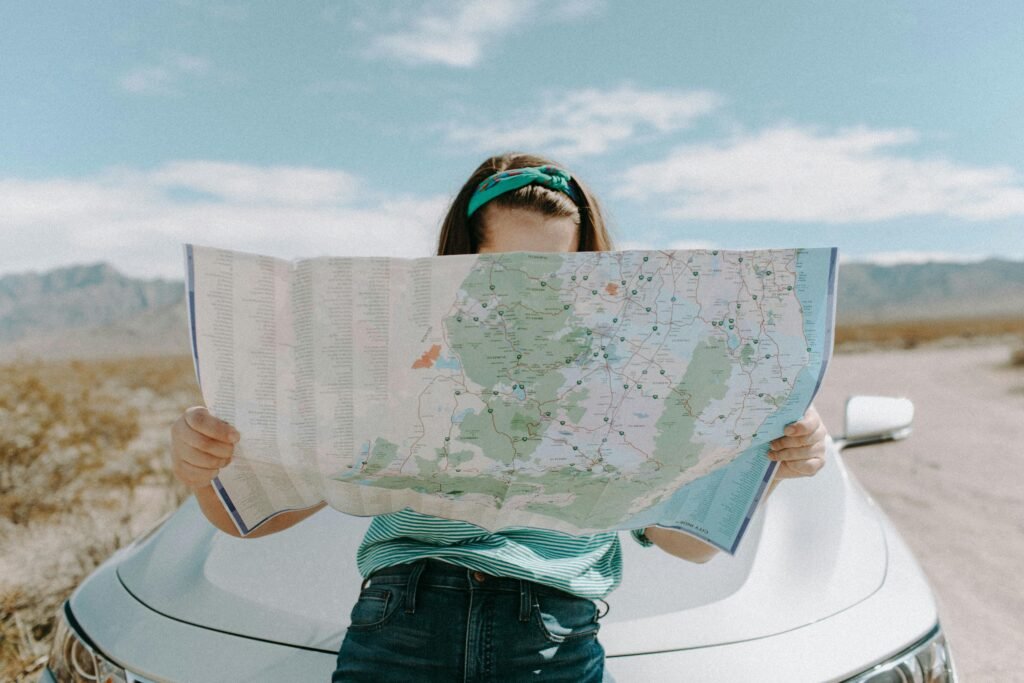
I. Why Choose South America for Your First Solo Adventure
If you’re thinking about taking your first solo trip, South America is an amazing place to start. It’s a continent full of variety — from jaw-dropping natural landscapes to fascinating cultures and welcoming locals. Whether you’re into ancient ruins, buzzing cities, or wild, off-the-beaten-path adventures, South America has something just for you.
A Continent of Mind-Blowing Diversity
One of the best parts about traveling alone in South America is how much the landscape changes from country to country — and even day to day! You could be walking across the surreal salt flats of Bolivia one week, then hiking near waterfalls and rainforests in Argentina and Brazil the next.
Traveling solo gives you the freedom to explore at your own pace. You get to decide where to go, how long to stay, and what speaks to your soul. And believe us — standing in front of places like Iguazu Falls or Machu Picchu for the first time, all on your own? That’s a feeling you’ll never forget.
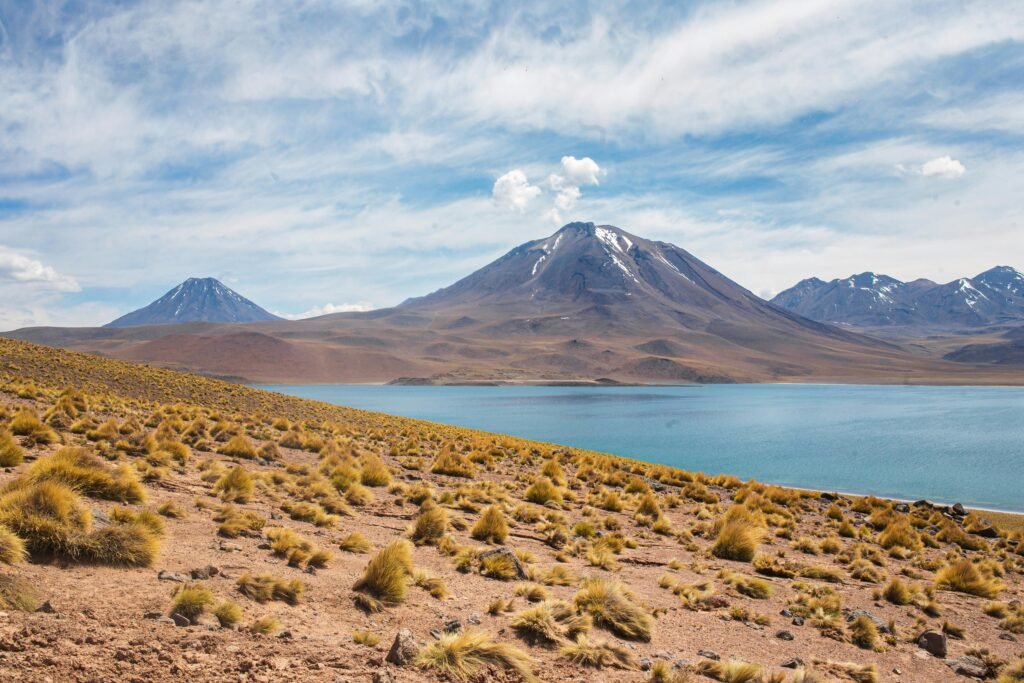
Image: Volcano by Lake Shore, Chile
Rich Cultural Experiences Around Every Corner
One of the most magical things about traveling solo in South America is how easy it is to connect with the local culture. The continent is full of incredible traditions — a mix of ancient indigenous roots and colonial history — that you can see, taste, and feel everywhere you go.
When you’re traveling alone, you’re more open to meeting new people. You’ll find yourself chatting with local artisans at markets, joining impromptu dance nights, or learning about ancient rituals from a friendly guide. These real, personal moments are what make a first solo trip to South America so unforgettable.
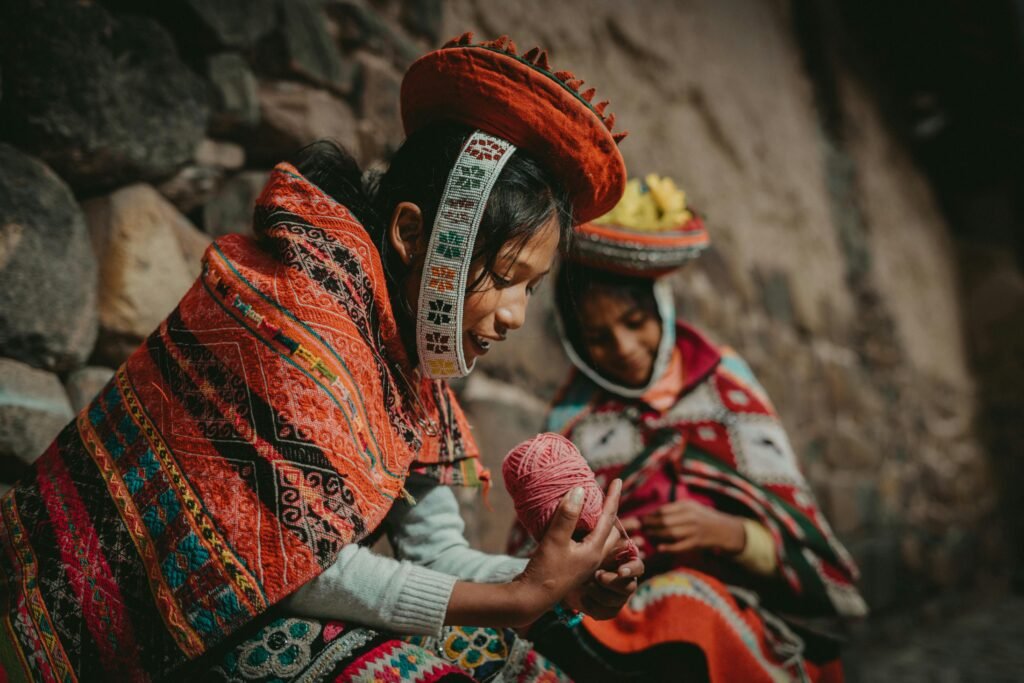
Image: Ollantaytambo, Cuzco, Perú
Easy Routes for First-Time Solo Travelers
Worried about getting around on your own? Don’t be! South America has well-established backpacker routes that make solo travel surprisingly easy — even for beginners. These paths link popular destinations like Cusco, La Paz, Buenos Aires, and Medellín, and they’re filled with helpful signs, hostels, and fellow travelers you’ll meet along the way.
Plus, once you’re feeling confident, it’s super easy to take a detour and explore those hidden gems off the tourist trail. The best part? You get to choose the pace, the path, and the playlist.
Travel Smart Without Spending a Fortune
One big reason to choose South America for your first solo trip? It’s seriously affordable — especially compared to Europe or North America.
In many South American countries, you can:
- Eat delicious local meals for just a few dollars
- Stay in clean, social hostels for $10–$20 a night
- Travel by bus or domestic flights without blowing your budget
This means you can explore more places, stay longer, and stress less about money. Total win for solo travelers!
And here’s a bonus: with a prepaid eSIM, you can stay connected wherever you go — no pricey roaming fees or sketchy Wi-Fi needed. It’s travel freedom, without the high cost.
📊 On a strict data plan? Here’s how to track and top up your eSIM.
II. Planning Your First Solo Trip to South America
Planning ahead can make the difference between a stressful trip and the adventure of a lifetime. If this is your first solo trip to South America, here’s how to get started — step by step.
Choose Your Destinations Wisely
South America is huge and full of variety — so unless you’ve got unlimited time (jealous!), it’s best to focus on just a few places that match your interests.
Love nature and wild landscapes?
- Amazon Rainforest (Brazil, Peru, Ecuador) — jungle treks and river adventures
- Patagonia (Argentina, Chile) — glaciers, mountains, and epic hikes
- Galápagos Islands (Ecuador) — surreal wildlife encounters
- Iguazu Falls (Argentina, Brazil) — one of the most powerful waterfalls on Earth
🇨🇴 Visiting Colombia? Check out the best eSIM for Colombia to stay online while exploring Cartagena or Medellín.
More into history, culture, and city life?
- Machu Picchu & Cusco (Peru) — Inca ruins and mountain magic
- Cartagena (Colombia) — colorful streets and Caribbean vibes
- Buenos Aires (Argentina) — tango, cafés, and European flair
- Quito (Ecuador) — charming old town + cool elevation
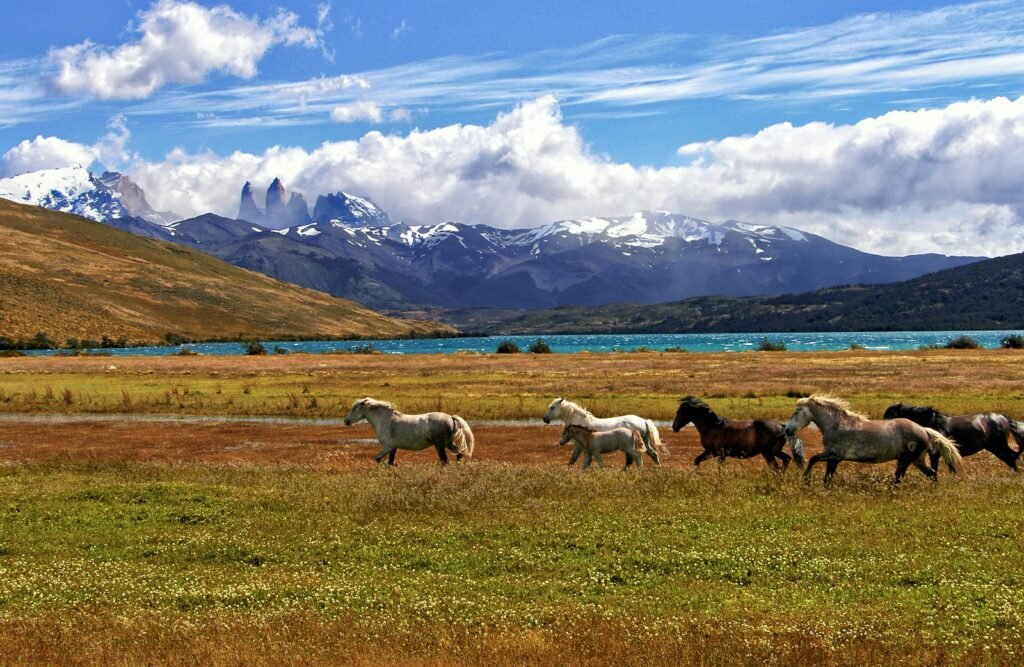
Image: Torres del Paine, Magallanes and Chilean Antarctica, Chile
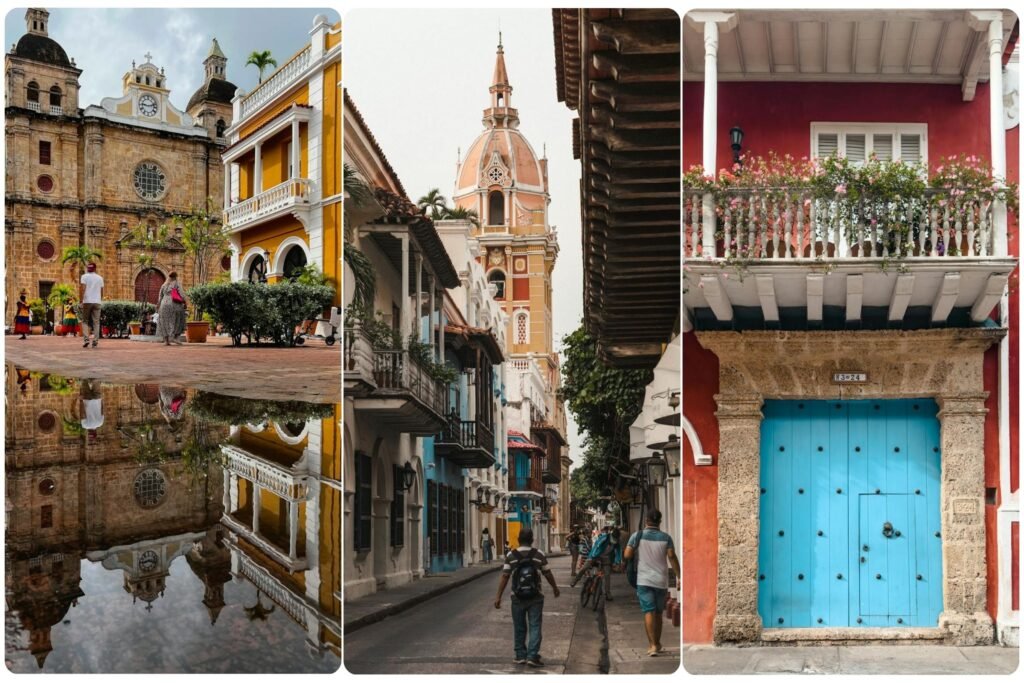
Image: Cartagena, Colombia
For Adventure Seekers:
- Trekking in the Andes Mountains
- Exploring the Salar de Uyuni (Bolivia)
- Hiking in Torres del Paine National Park (Chile)
- Surfing along the Pacific coast
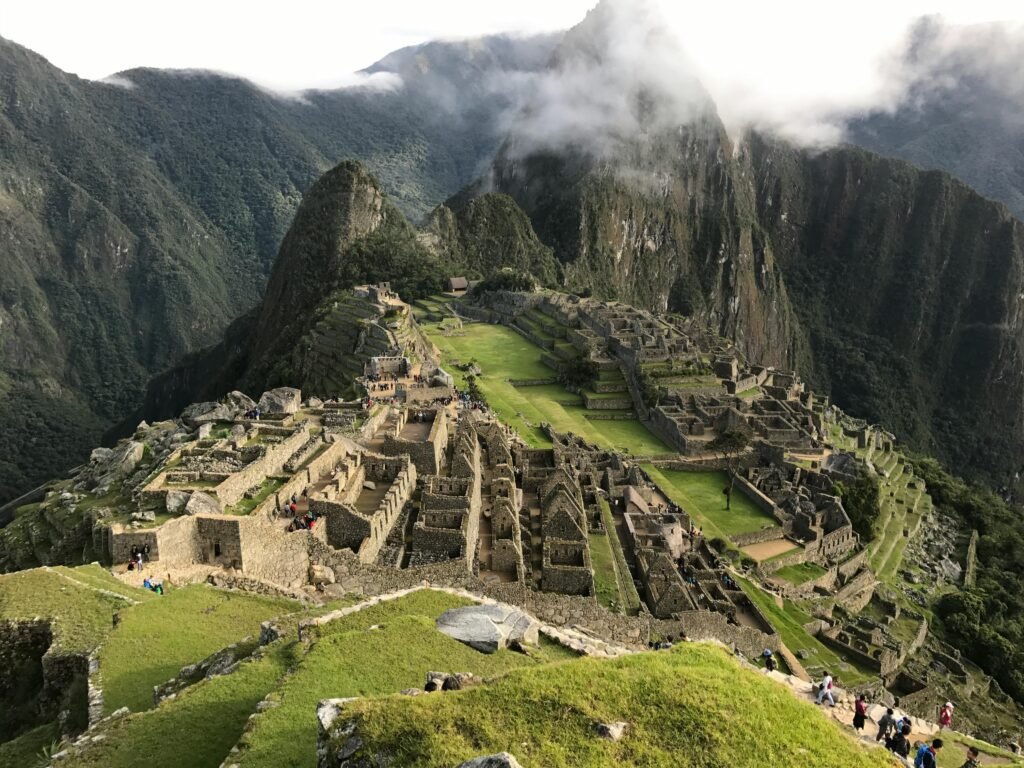
Image: Machu Picchu ruins during first solo trip to South America
🇵🇪 Trekking in Peru? Grab the best eSIM for Peru to stay connected even in the Sacred Valley.
Build a Flexible Itinerary
Don’t try to cram everything in — trust us, you’ll want time to explore, rest, and follow your curiosity.
Here’s how to balance structure with spontaneity:
- Check the climate: Some areas have extreme weather changes
- Look up festivals: From Carnival to Inti Raymi, they’re worth planning around
- Factor in travel time: South America’s big — buses and flights take longer than you think
- Include rest days: Solo travel is exciting, but it can be tiring too
Don’t Forget Your Travel Docs
A few essentials you must sort out before takeoff:
- Passport — Make sure it’s valid at least 6 months past your return date
- Visas — Check entry rules for every country you plan to visit
- Vaccines — Some places (like the Amazon) require proof of yellow fever vaccination
- Travel insurance — Super important, especially when traveling solo. Keep both digital and printed copies!
Budgeting Basics for Solo Travel
South America can be very affordable — but costs do vary depending on the country.
Here’s a rough guide to help you plan:
| Category | Typical Costs |
|---|---|
| 🛏 Accommodation | $10–30/night in hostels, $30–80/night in hotels |
| 🍛 Food | $5–15/day for street food & local meals; $15–30/day with restaurants |
| 🚌 Transport | $5–20 for buses; $50–200 for domestic flights |
| 🗺 Activities | $20–100 for tours, entry fees, etc. |
| 🚨 Emergency Fund | Always keep an extra $300–500 for unexpected situations |
💡 Pro tip: Book transportation and eSIMs ahead of time to avoid overpriced last-minute options.
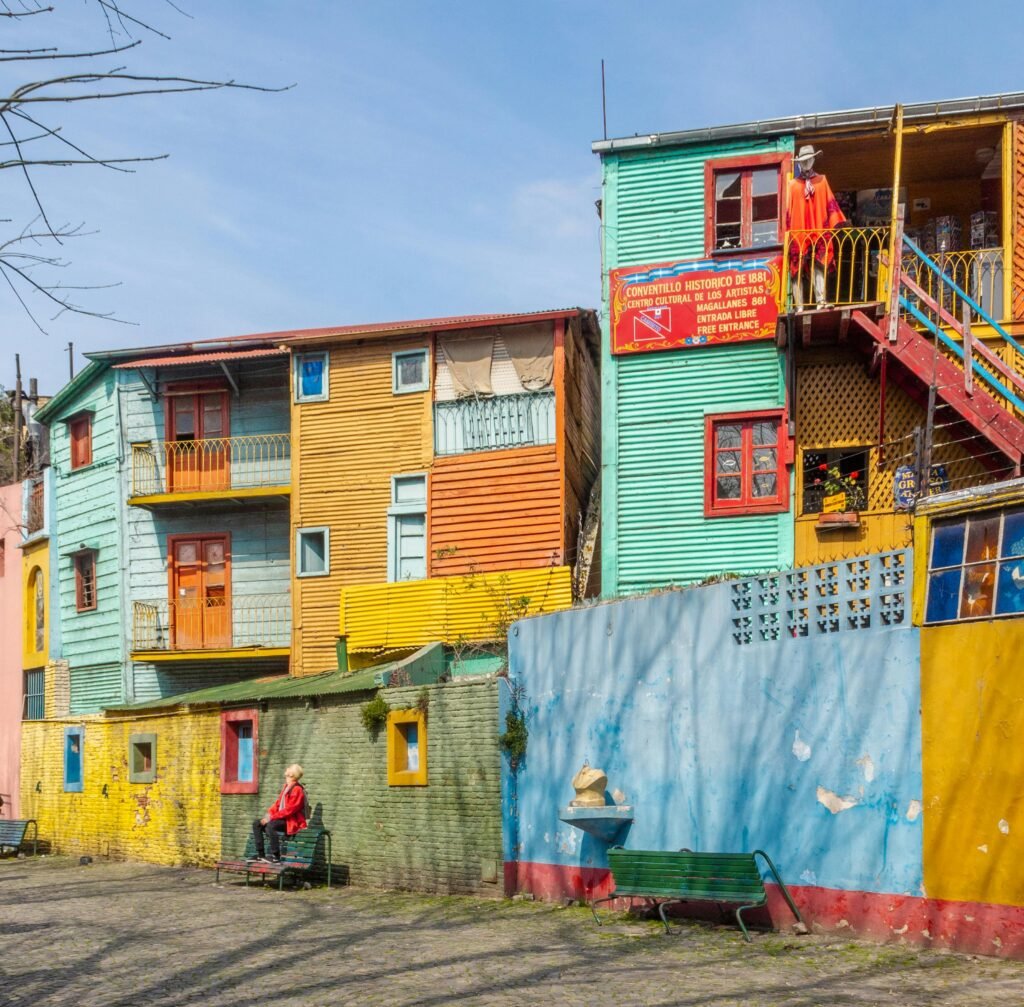
Image: Solo traveler exploring colorful streets during first solo trip to South America
🔁 Multi-country trip? Use eSIM and physical SIM together for total flexibility.
III. Safety Considerations for Solo Travelers in South America
Let’s be real — safety is one of the biggest things people worry about when traveling solo. But here’s the good news: with the right mindset and a little preparation, you can explore South America confidently and safely.
Do Your Research (It Really Helps!)
Before heading off on your first solo trip to South America, take time to learn about each place you plan to visit. Safety can vary a lot depending on the country — or even the neighborhood.
Stay informed through:
- Government travel advisories (like travel.state.gov or smartraveller.gov.au)
- Recent reviews from travelers on blogs or TripAdvisor
- Expat groups and solo travel forums on Facebook or Reddit
- Local news (Google Alerts are handy!)
This will help you know where to stay, what to avoid, and how to move around with confidence.
Practical Safety Tips for Solo Travelers
Here are some smart, simple ways to stay safe while still enjoying your adventure:
- Keep your valuables secure – Use a money belt or hidden pouch for your passport, cash, and cards
- Stay alert in busy areas – Pickpocketing can happen in markets, bus terminals, or touristy spots
- Use official transport – Always go with registered taxis or rideshare apps like Uber or Cabify
- Limit late-night wandering – Especially in areas you don’t know well
- Stay connected – Let someone back home know your plans and check in often Listen to your gut – If something feels off, don’t ignore it. Change direction, leave, or ask for help
Solo Female Travel in South America: Tips & Empowerment
South America is a beautiful place for solo female travelers — but it’s totally okay to take a few extra precautions.
Here are some things that can make your trip feel safer and more comfortable:
- Dress with local culture in mind – Especially in conservative or rural areas
- Wear a simple ring – In some places, it can help reduce unwanted attention (optional, of course!)
- Join women-only travel groups/apps – Great for finding local tips and meetup buddies
- Pick female-friendly stays – Hostels with good solo reviews or women-only dorms are a great choice
- Set boundaries with confidence – Be polite but firm if someone makes you uncomfortable
Remember: being solo doesn’t mean being alone. You’ll meet tons of other travelers along the way, and most locals are warm, helpful, and happy to share their culture with you.
IV. Where to Stay on Your First Solo Trip to South America
Where you sleep can shape your whole travel experience — especially when you’re going solo. Whether you’re looking to make new friends, get some alone time, or feel like a local, South America has something for every kind of independent traveler.
Here’s a quick breakdown of your best options:
Social Hostels: Your Built-In Travel Community
If this is your first solo trip, hostels are a game-changer. They’re budget-friendly and super social — perfect for meeting fellow travelers over breakfast, in the lounge, or during hostel events.
Why hostels are awesome:
- Common areas + pub crawls, walking tours, cooking nights, etc.
- Super affordable: usually $8–25 per night
- Great tips from staff + other travelers who’ve just come from your next stop
- You can choose your vibe — from party hostels to quiet, boutique-style spots
Guesthouses & Budget Hotels: A Bit More Privacy
Want your own space but still want to keep it affordable? Guesthouses and budget hotels are a nice middle ground.
Here’s what you’ll love:
- Private rooms at good prices ($25–60/night)
- Often family-run, so you’ll get insider tips from the hosts
- Quieter than hostels — perfect if you need a break from the social scene
Short-Term Rentals: Homey & Independent
Staying longer or just want your own little place to chill? A rental (like Airbnb or Booking apartment stays) might be the way to go.
What makes them great:
- Kitchen access so you can cook and save money
- Stay in local neighborhoods and get a more authentic feel
- More space = more comfort + downtime
- Often cheaper than hotels for weekly stays or longer
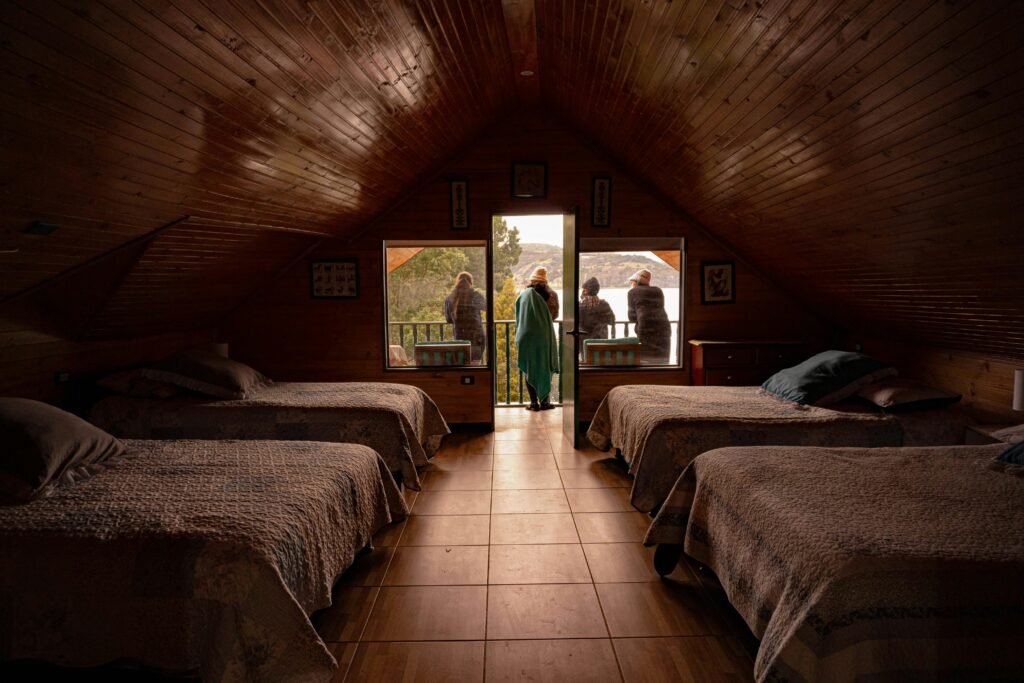
Image: Cozy hostel common area where solo travelers connect during their first solo trip to Colombia
V. Transportation During Your Solo South American Adventure
Navigating transportation is a key aspect of independent travel across South America. Each option offers different advantages:
Bus Travel
The backbone of South American transportation:
- Extensive networks connecting most destinations
- Various comfort levels from basic to luxury
- Economical option for budget travelers
- Opportunity to see the countryside
- Overnight options to save on accommodation
Domestic Flights
Worth considering for longer distances:
- Save valuable time in this vast continent
- Increasingly affordable with budget airlines
- Essential for reaching remote destinations
- Often necessary for visiting the Galapagos or Amazon
Local Transportation
For day-to-day exploration:
- Public buses for authentic local experiences
- Metro systems in major cities like Santiago and Buenos Aires
- Shared colectivos and combis in Peru and Bolivia
- Taxis for convenience (use registered services)
Every traveler is different — some folks mix it up during their trip! Start with hostels to make friends, then switch to a guesthouse or rental when you want a slower pace. The best part of solo travel? You get to choose what feels right.
VI. Overcoming Language Barriers on Your First Solo Trip to South America
Let’s be real — not speaking the local language fluently can feel intimidating. But don’t let that stop you! While English is common in touristy areas, picking up a bit of Spanish or Portuguese will make your solo trip smoother, more fun, and way more rewarding.
How to Prep Before You Go
You don’t need to be fluent — just a few phrases can go a long way. Here’s how to get language-ready:
- Learn the basics — How to order food, ask for directions, and handle simple conversations
- Use apps like Duolingo or Babbel — 5–10 minutes a day adds up fast
- Take a short local course — Places like Cusco (Peru) and Quito (Ecuador) offer great budget-friendly classes
- Make your own phrase cheat sheet — Write down key expressions you’ll actually use (like “Where’s the bathroom?” or “One empanada, please!”)
Smart Ways to Communicate on the Road
When the words just won’t come out — don’t panic! Try these go-to strategies:
- Use Google Translate — Download offline languages before your trip
- Carry a mini phrasebook or pocket dictionary — Super useful when your phone dies
- Use hand gestures and visuals — Pointing and smiling = universal language
- Speak slowly and clearly — Not louder (they’re not deaf 😂)
- Be patient, and laugh it off — Most locals appreciate the effort and will gladly help
Bonus tip: Making the effort to speak a few words in Spanish or Portuguese shows respect — and it opens the door to more real, memorable moments with locals.
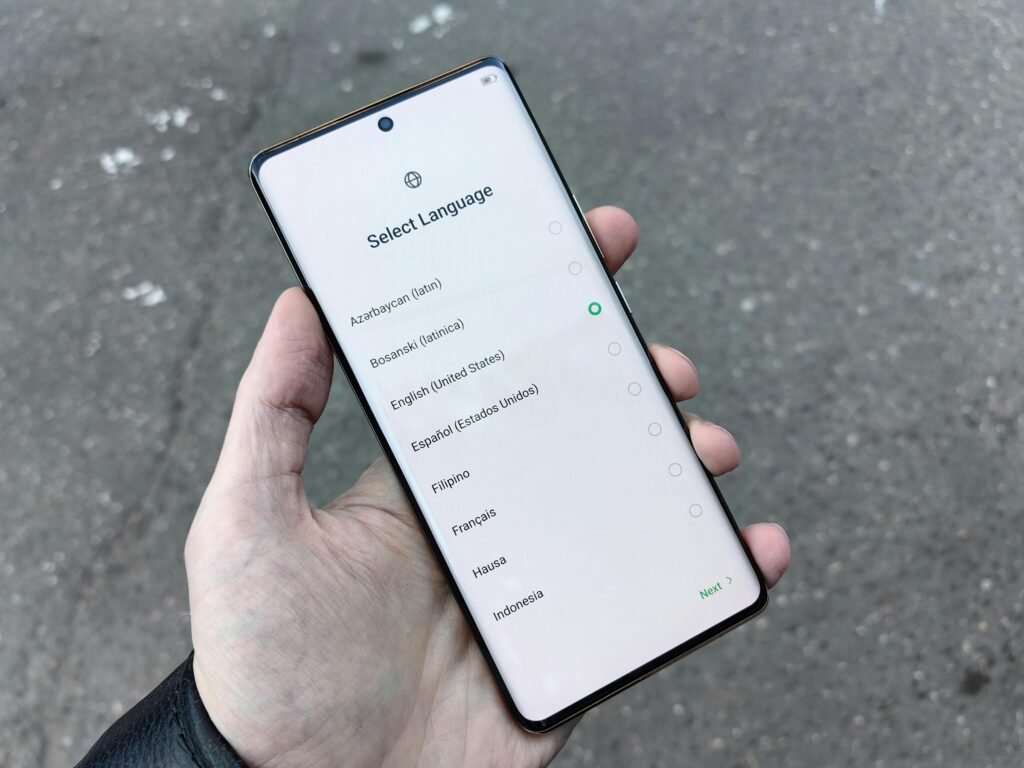
Image: Solo traveler using language app during first solo trip to South America
VII. Building Connections During Your Solo Journey
A lot of people worry solo travel means being… well, solo all the time. But here’s the truth: traveling alone actually makes it easier to connect — with fellow travelers, locals, and even yourself.
Here’s how to make meaningful connections while still enjoying your independence:
Meet Fellow Travelers (Your Instant Community)
You’re never truly alone on the road — not with these awesome ways to meet people:
- Stay somewhere social — Hostels, co-living spaces, and guesthouses with common areas are perfect for chatting over coffee or sharing travel tips
- Join free walking tours — Great for learning about the city and meeting people with the same curious vibe
- Book group activities — Day hikes, food tours, scuba classes — shared experiences create fast friendships
- Try travel apps — Backpackr, Tourlina (for female travelers), Couchsurfing hangouts, Meetup.com — all solid ways to connect
- Go to language exchanges or expat meetups — Low-pressure, high-fun social spots
Connect With Locals (The Soul of the Journey)
Some of your most memorable moments will come from the locals who welcome you in:
- Take a cooking class or salsa lesson — Learn, laugh, and maybe even get dinner invites afterward
- Explore markets and small shops — Great places to chat and get local recommendations
- Stay with a local — Try homestays or community-based tourism for a more immersive experience
- Go where the locals go — Festivals, parades, and even small-town events often lead to spontaneous magic
- Volunteer for a few days — Give back and build real relationships with the community
Balance Solo Time & Social Energy
One of the best parts of solo travel? You get to choose how social you want to be.
- Enjoy your alone time — Read a book in a plaza, go for a solo hike, or reflect over coffee
- Mix it up — Add in a social activity every few days to keep connections flowing
- Say yes when it feels right — But also, feel free to say no without guilt
- Solo meals = observation time — People-watch, journal, or just savor the food
VIII. Must-Have Packing Items for South America
Packing smart can make your whole trip smoother, safer, and way more fun — especially when you’re flying solo. South America’s got all the climates (rainforests, mountains, deserts, beach towns…), so you’ll want to be ready for anything.
Here’s what to pack to feel prepared, not overloaded:
Essential Gear for Everyday Adventure
- Layered clothing – Weather changes fast, especially in the Andes. Bring basics you can mix and match: T-shirts, thermal base layers, a light rain jacket, and a warm sweater.
- Quality daypack – Lightweight, comfy, and fits everything for a full-day outing. Bonus if it has anti-theft zippers!
- Security gear – A money belt, luggage locks, and an RFID-blocking wallet will give you peace of mind in crowded areas.
- Mini first aid kit – Include band-aids, motion sickness meds, painkillers, and stomach remedies (trust us on that one 🙃).
- Universal adapter – South America has a mix of plug types, so a multi-adapter = one less headache.
- Portable charger – Long bus rides and full sightseeing days = battery drain. Don’t get caught at 2%.
- Quick-dry towel – Hostels don’t always provide them, and they’re handy for beach days, hikes, or last-minute waterfall detours.
- Headlamp or flashlight – Perfect for early hikes, night arrivals, or the occasional blackout (yes, they happen!).
Tech Essentials for Solo Travelers
- Unlocked smartphone – So you can pop in a local SIM or travel eSIM and stay connected (no roaming stress!).
- Extra power bank – One isn’t always enough — especially on those scenic-but-signal-less 10-hour bus rides.
- Camera or smartphone with good photo quality – You’ll want to remember that sunrise over Machu Picchu 😍
- E-reader or book – Perfect for long rides, airport waits, or solo café mornings.
- Travel lock – Use it to secure lockers in hostels or your bag when on the move.
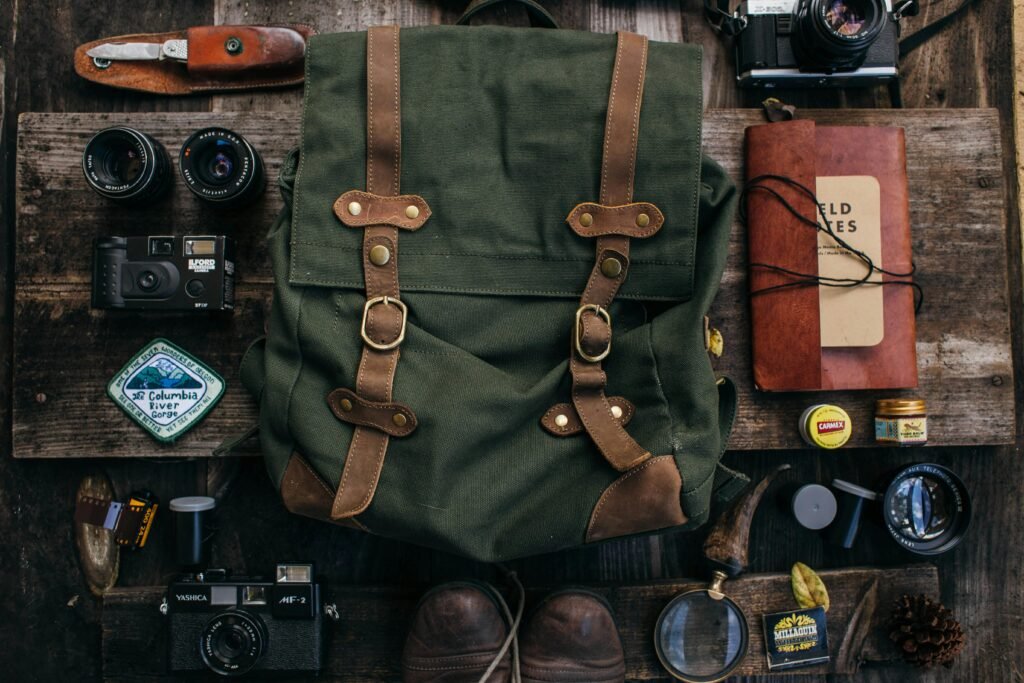
Image: Backpack essentials laid out for first solo trip to South America
✈️ Pro Tip: Lay everything out before you pack, then cut it down by 20%. You’ll thank yourself when you’re lugging that backpack through cobblestone streets in Cusco.
IX. Staying Connected During Your Solo Adventure
When you’re traveling alone, staying connected isn’t just about scrolling Instagram — it’s about safety, support, and peace of mind. Whether you’re texting family, navigating a new city, or booking your next hostel, reliable internet is a game-changer.
Here’s how to make sure you’re always just a tap away from help, info, or a friendly chat:
Internet Access in South America
- Cities and tourist towns usually have decent WiFi — you’ll find it in cafés, hostels, and hotels
- Rural or remote areas (like the Amazon or Patagonia) may have spotty or no service — plan ahead
- Pocket WiFi can help but it’s bulky and often pricey — not ideal for solo backpackers
- eSIMs are a lifesaver — Instant connection, no need to hunt for local SIM stores or deal with language barriers (and yes, GOHUB’s eSIMs work in 100+ countries!)
Local SIM Cards (Old School, Still Works)
- You can buy SIMs at airports or official shops
- A valid passport is usually required
- Prices are cheaper than international roaming, but setup can be a hassle
- Major providers: GOHUB (eSIM), Movistar, Claro, TIM, depending on the country
Note: If you’re visiting multiple countries, switching SIMs gets annoying. That’s where a regional travel eSIM saves time and money.
Keeping in Touch With the World
Solo travel doesn’t mean disappearing — here’s how to stay grounded and connected to people who matter:
- Check in regularly — Schedule a quick message or call with someone back home
- Share your itinerary — Let a trusted friend know your rough route
- Use WhatsApp — It’s the go-to app in South America and works great on WiFi or data
- Update your socials or travel blog — Not just for the likes — it’s a great way to document your journey, and people will love following along!
X. Cultural Immersion on Your First Solo Trip to South America
One of the biggest rewards of traveling solo? You notice more. You connect more. You feel more. Without distractions, you’re free to fully soak up the culture around you — and in South America, that means vibrant traditions, incredible food, rich history, and some of the warmest people you’ll ever meet.
Here’s how to dive deep into the culture — with respect, curiosity, and an open heart:
Participate Respectfully in Local Culture
Being a good guest matters — and a little awareness goes a long way. Here’s how to show respect while enjoying authentic experiences:
- Do a little research before you arrive — learn basic etiquette, greetings, and what’s considered respectful behavior
- Dress modestly at religious or sacred sites — even beach towns may have different standards inland
- Ask before taking photos of people — it’s about dignity, not just Instagram
- Learn the history — understanding the local context makes visits to places like Machu Picchu or Quito’s old town so much deeper
- Support ethical tourism — Choose experiences run with local communities, not just ones that profit from them
Explore Local Food Like a Cultural Pro
Food is one of the best (and tastiest) ways to connect with a place. Be bold — your taste buds will thank you!
- Try the classics — Argentine asado, Peruvian ceviche, Brazilian feijoada, Ecuadorian hornado — every country has a dish that tells a story
- Join a cooking class — Learn traditional recipes and techniques straight from locals
- Visit local markets — Great for snacks, people-watching, and getting a feel for daily life
- Eat with locals — Community dinners or food tours often lead to great convos and new friends
- Yes to street food! — Just follow the locals. Busy stalls = fresher, safer, and more delicious
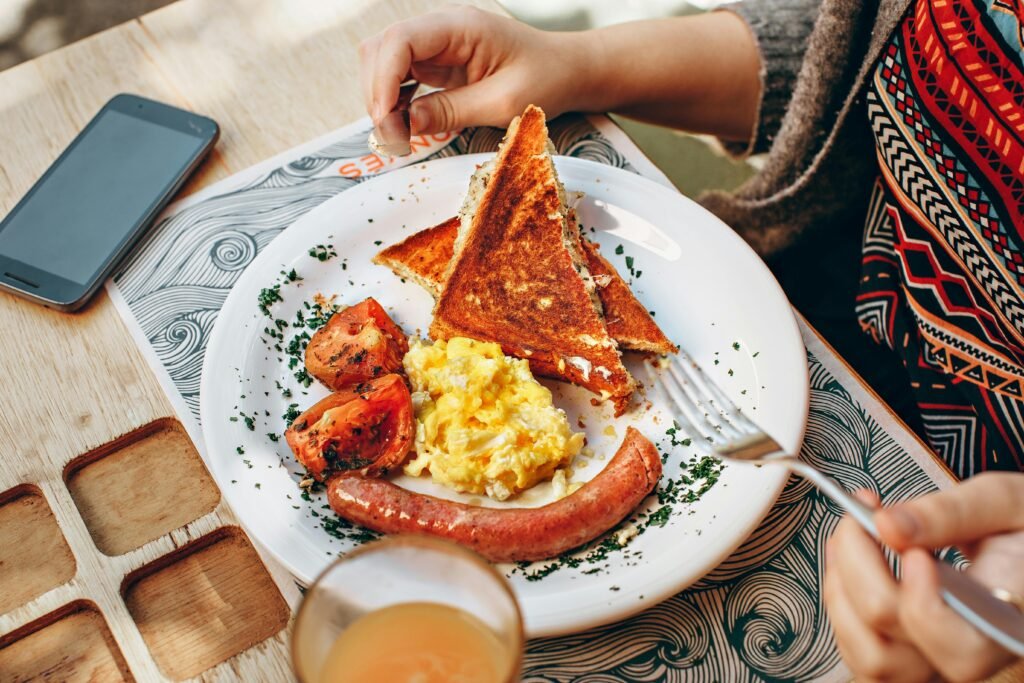
Image: Solo traveler enjoying local cuisine during first solo trip to South America
XI. Staying Healthy on Your First Solo Trip to South America
Feeling good = traveling well. No one wants to get sick in the middle of the Amazon or on a mountain in Peru, especially when you’re solo. The good news? With a little planning, staying healthy is totally doable.
Here’s how to protect your health before and during your South American adventure:
Pre-Trip Health Prep (Don’t Skip This!)
A few smart moves before you leave can save you from headaches (literally and figuratively) later on:
- See a travel doctor 6–8 weeks before you go — They’ll advise you on vaccines and health risks based on your route
- Vaccinations to consider — Yellow fever (required in some areas), typhoid, hepatitis A, and maybe rabies if you’ll be in rural zones
- Pack essential meds — Bring any prescription meds in original packaging, plus extras just in case
- Look up clinics or hospitals in major cities on your route — good to know what’s nearby
- Understand your travel insurance — Know what’s covered and how to make a claim if needed
On-the-Road Tips to Stay Well
Once you’re out exploring, a few small habits can make a big difference:
- Drink clean water — Stick to bottled or purified water, especially in rural areas
- Be street food smart — Look for busy stalls with locals lined up (hot, fresh, and high turnover = safer)
- Avoid unpeeled raw fruits if you’re unsure — opt for bananas, oranges, or anything you can peel yourself
- Take it slow at high altitudes — Places like Cusco or La Paz can wipe you out if you rush it. Rest, hydrate, and don’t plan intense hikes on day one
- Protect your skin — The sun is stronger at high elevations. Pack sunscreen, sunglasses, and a hat
- Carry a mini health kit — Include electrolytes, painkillers, altitude tablets, and stomach meds (because you never know)
✨ The more you take care of your body on the road, the more you’ll enjoy every moment — from jungle treks to mountain towns.
XII. Responsible Solo Travel in South America
Traveling alone gives you incredible freedom — and with that freedom comes the chance to do a lot of good. On your first solo trip to South America, the small choices you make can have a real, positive impact on the people, places, and planet you encounter.
Here’s how to explore mindfully and leave things better than you found them:
Be Kind to the Environment
South America is home to some of the world’s most fragile and beautiful ecosystems — from rainforests to glaciers. Let’s keep them thriving:
- Use a reusable water bottle — Ideally one with a built-in filter or purification tabs
- Choose eco-friendly tour companies — Look for local guides who prioritize sustainability
- Follow Leave No Trace principles — Stay on trails, pack out trash, don’t take “souvenirs” from nature
- Reduce plastic use — Bring your own tote bag, utensils, and reusable containers
- Support conservation efforts — Consider donating, volunteering, or simply visiting responsibly-run parks and reserves
🇨🇷 Planning a rainforest escape? Don’t forget the best eSIM for Costa Rica for jungle-to-beach data.
Travel Ethically & Respectfully
Every purchase and interaction on your journey is a chance to support people directly — and travel in a way that uplifts, not extracts.
- Do a little research before booking — Choose tours and stays that are transparent, ethical, and locally operated
- Buy local — From handmade crafts to meals at family-owned eateries, this supports real communities
- Respect wildlife — No touching, no feeding, no flash photography. Watch from a distance — it’s better for them and for you
- Offset your flights if you can — Many programs now let you contribute to reforestation or clean energy
- Learn what’s fair — Understand local pricing to avoid overpaying or accidentally undercutting local value
✨ When you travel with intention, you become more than just a visitor — you become part of a global community of mindful explorers.

Image: Eco-friendly accommodation during first solo trip to South America
XIII. Staying Connected with Reliable Internet During Your Journey
For today’s solo travelers, maintaining reliable internet access is essential for navigation, safety, and sharing your experiences. This is where Gohub’s international SIM and eSIM solutions become invaluable companions on your first solo trip to South America.
Why Traditional Connectivity Options Often Fall Short
Sure, there are other ways to get online — but they usually come with headaches:
- Hotel WiFi is often unreliable, slow, or limited to certain areas
- Public WiFi can be risky — especially for online banking or personal logins
- Roaming fees from your home provider? Yikes. They can skyrocket fast
- Buying local SIMs in each country takes time, paperwork, and usually a passport
The GOHUB Advantage for Solo Travelers
GOHUB is built specifically for independent explorers — no fuss, no stress, just seamless connectivity across South America:
- Instant Activation – Set up your eSIM before your flight and land ready to connect
- Multi-Country Coverage – One eSIM works across borders, from Colombia to Chile
- Affordable Data Plans – Stay connected without draining your travel budget
- Flexible Options – Choose a plan that matches your trip length and data needs
- 24/7 Support – Need help in the middle of the Andes? We’ve got you, in multiple languages

Image: Screenshot of the GoHub eSIM webpage, highlighting the destination input field with “Destination” selected, illustrating how users can easily search for eSIM data plans.
👉Plan ahead with GoHub’s eSIMs for every destination
With GoHub, you can navigate confidently, stay safe, share your journey in real-time, and focus on what matters most: living your adventure fully.
XIV. Conclusion: Embracing Your First Solo Trip to South America
Your first solo trip to South America isn’t just about ticking places off a map — it’s about discovering new cultures, new landscapes, and, most of all, a new side of yourself. With a little preparation and an open heart, you’ll explore this incredible continent with confidence, curiosity, and a sense of freedom you’ll never forget.
Independent travel isn’t about doing it all alone — it’s about creating meaningful moments on your own terms. From sunrise hikes in the Andes to spontaneous street food conversations, every experience is yours to shape.
You’ll return home with more than just memories and photos — you’ll carry new perspectives, deeper self-trust, and stories that’ll stay with you forever.
South America is full of warmth, wonder, and welcoming people. It’s a continent that rewards travelers who show up with respect, humility, and a spirit of adventure.
So pack your bags, secure your reliable connectivity with Gohub, and take that first step toward your South American solo journey. The experience of a lifetime awaits.
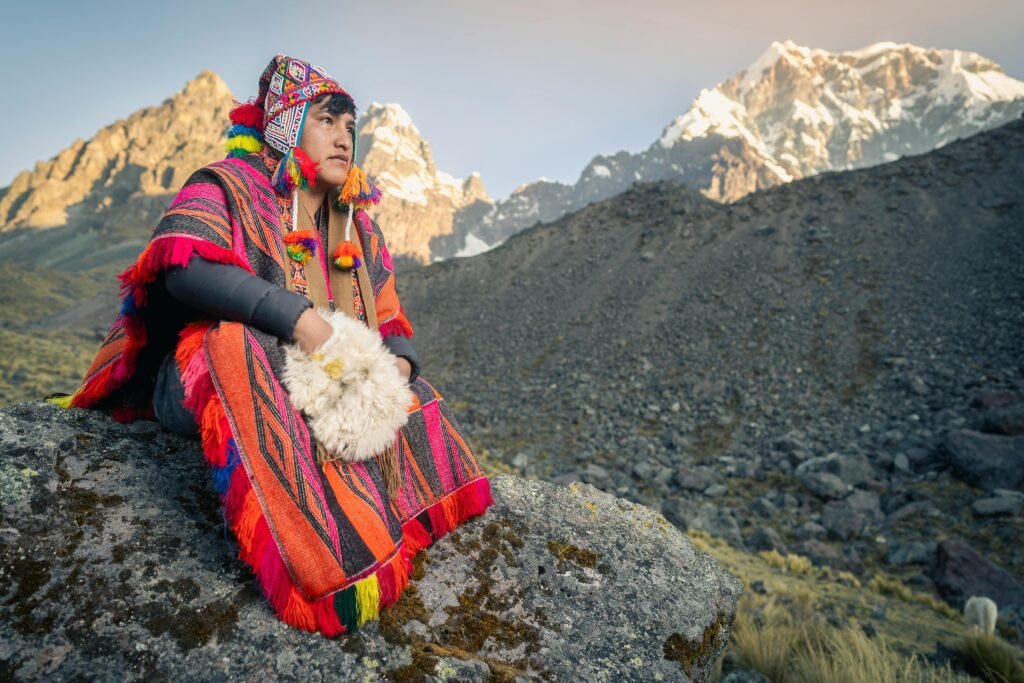
Image: Sunset view of Andes mountains during first solo trip to South America
Have you taken your first solo trip to South America? Share your experiences in the comments below!
Ready to ensure seamless connectivity during your South American adventure? Check out Gohub’s affordable international SIM and eSIM solutions designed specifically for travelers.








